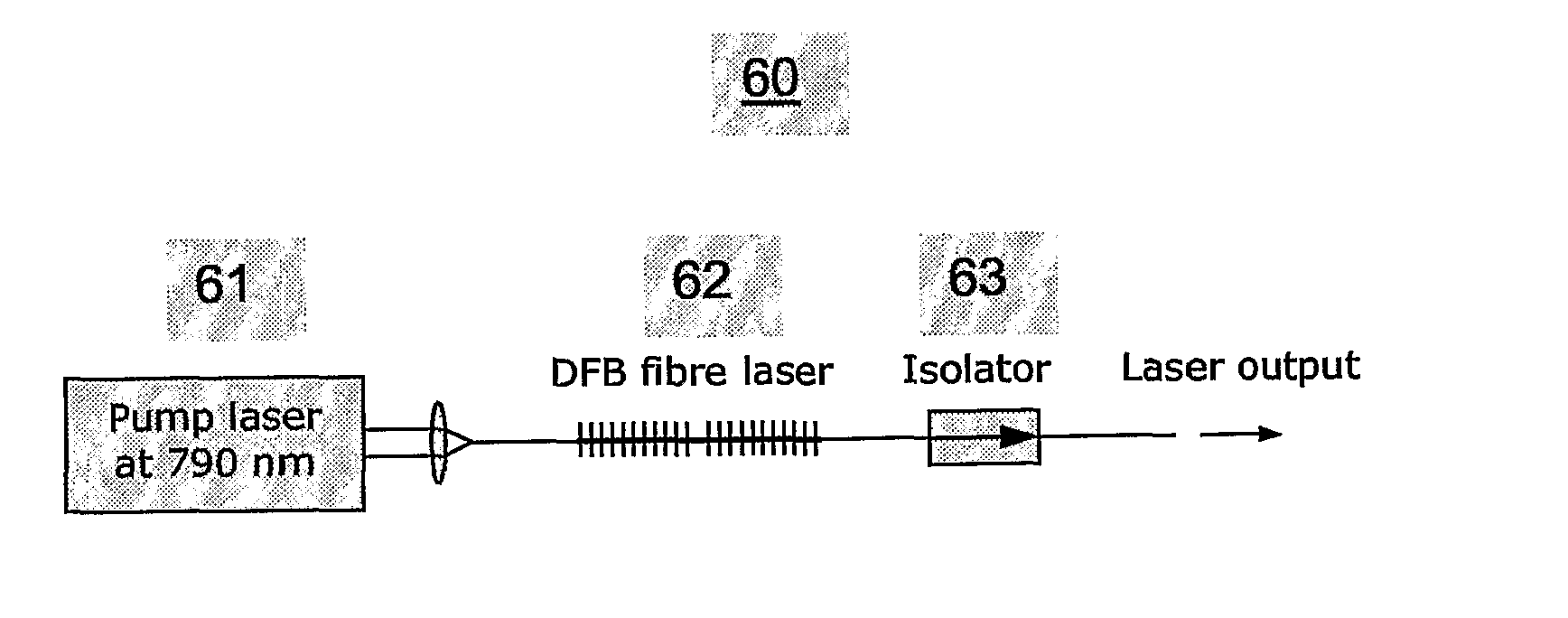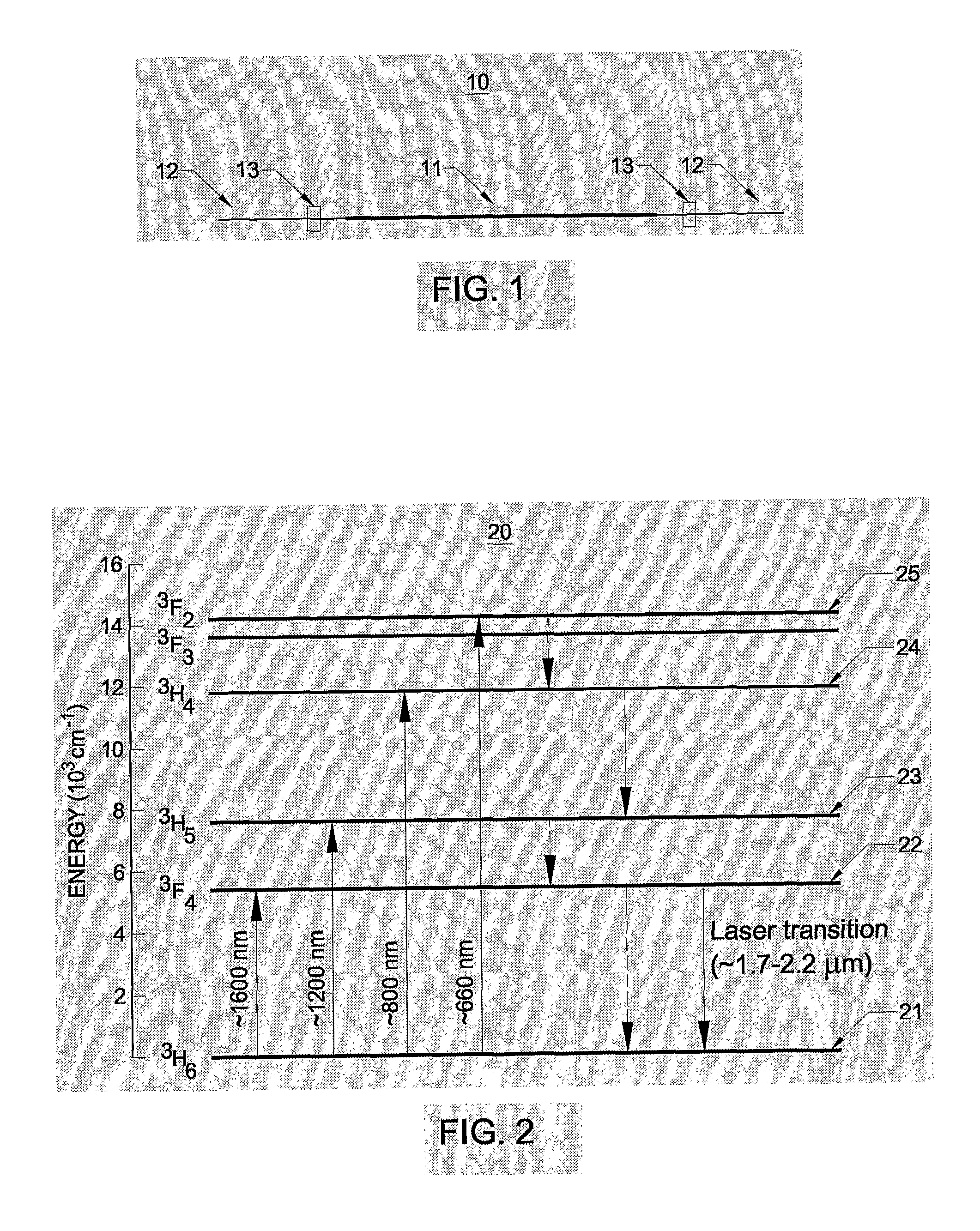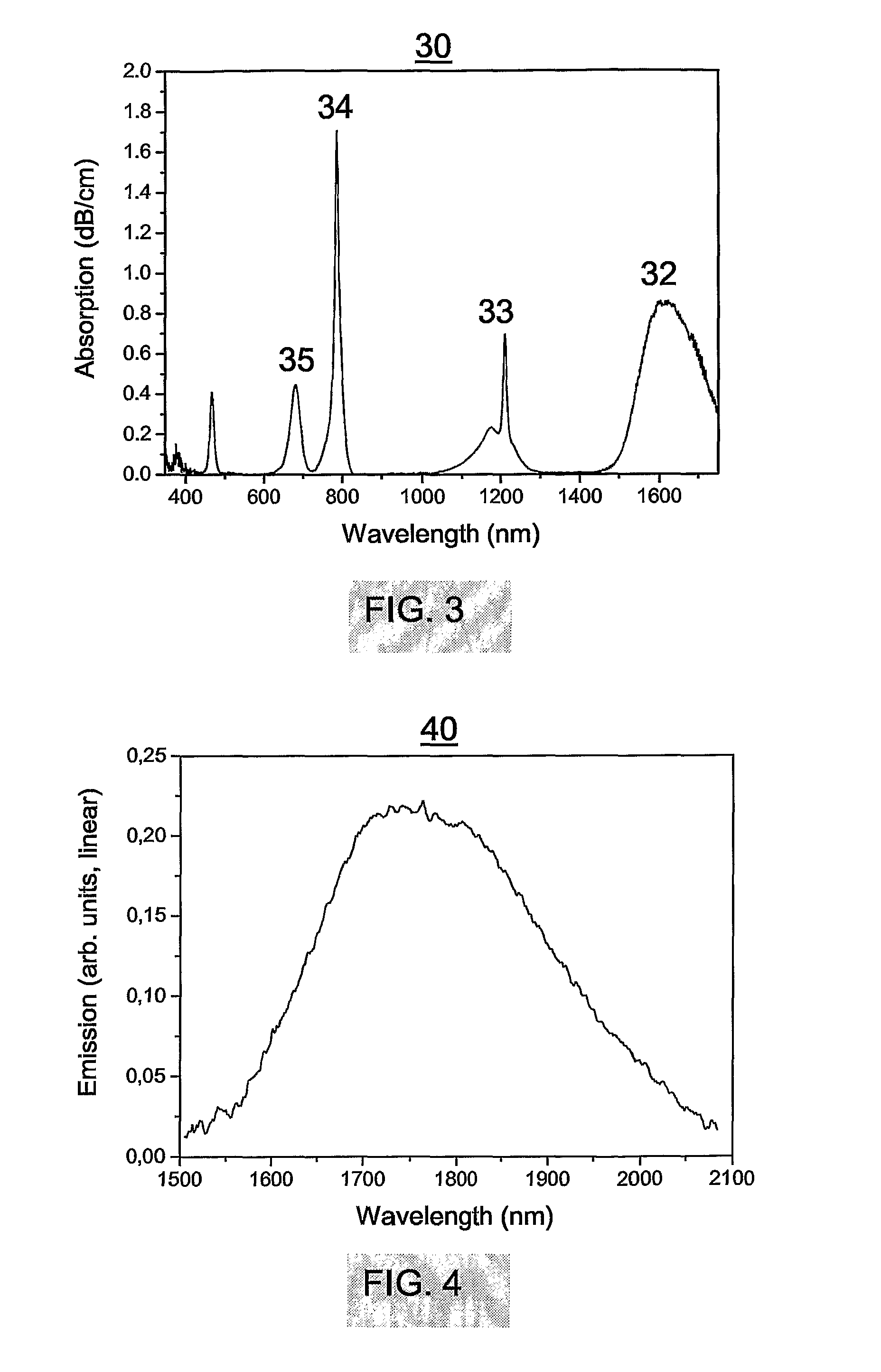Single frequency thulium waveguide laser, an article comprising it, its use and a method of its manufacture
a single-frequency thulium waveguide and laser technology, applied in the direction of laser details, wave amplification devices, optical resonator shape and construction, etc., can solve the problems of limited wavelength tuning range, large volume of lidar systems, complex and expensive, etc., and achieve the effect of compact, simple and economical
- Summary
- Abstract
- Description
- Claims
- Application Information
AI Technical Summary
Benefits of technology
Problems solved by technology
Method used
Image
Examples
Embodiment Construction
[0095]FIG. 1 shows a setup for a single-frequency thulium doped waveguide laser according to the invention.
[0096] The figure schematically depicts an exemplary single-frequency thulium doped fibre laser 10 according to the invention, wherein numerals 11-13 refer to, respectively, the thulium doped waveguide with optional imbedded laser resonator design 11, passive optical waveguide for guiding of optical pump light and waveguide laser output 12, and optional external feedback mechanism 13. Significantly, single-frequency lasing is obtained by using a wavelength selective, short laser resonator design to obtain lasing in a single longitudinal mode, in combination with a polarisation asymmetry to discriminate between the 2 orthogonal polarisation modes. The optional embedded laser resonator design in 11 is preferably a Bragg grating structure, such as a distributed feedback (DFB) or a distributed Bragg reflector (DBR) resonator. The optional external feedback mechanism 13 can be a Br...
PUM
 Login to View More
Login to View More Abstract
Description
Claims
Application Information
 Login to View More
Login to View More - R&D
- Intellectual Property
- Life Sciences
- Materials
- Tech Scout
- Unparalleled Data Quality
- Higher Quality Content
- 60% Fewer Hallucinations
Browse by: Latest US Patents, China's latest patents, Technical Efficacy Thesaurus, Application Domain, Technology Topic, Popular Technical Reports.
© 2025 PatSnap. All rights reserved.Legal|Privacy policy|Modern Slavery Act Transparency Statement|Sitemap|About US| Contact US: help@patsnap.com



